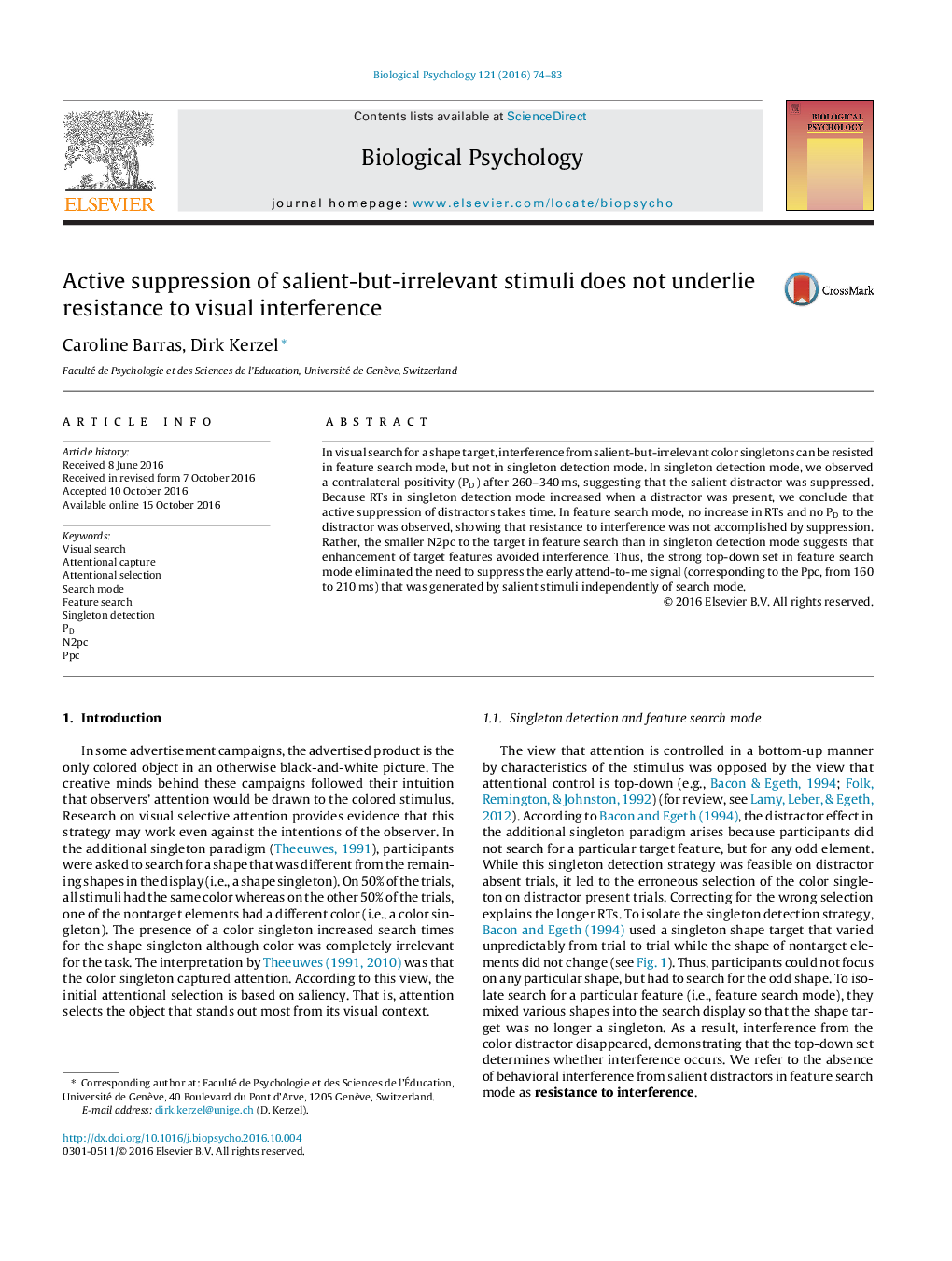| Article ID | Journal | Published Year | Pages | File Type |
|---|---|---|---|---|
| 5040442 | Biological Psychology | 2016 | 10 Pages |
â¢Salient distractors disrupt visual search in singleton detection mode.â¢In feature search mode, interference from salient distractors is absent.â¢Distractor suppression (the PD component) occurred in singleton detection mode.â¢Resistance to interference in feature search mode was not based on suppression.â¢Rather, target features were enhanced in feature search mode (smaller target N2pc).
In visual search for a shape target, interference from salient-but-irrelevant color singletons can be resisted in feature search mode, but not in singleton detection mode. In singleton detection mode, we observed a contralateral positivity (PD) after 260-340Â ms, suggesting that the salient distractor was suppressed. Because RTs in singleton detection mode increased when a distractor was present, we conclude that active suppression of distractors takes time. In feature search mode, no increase in RTs and no PD to the distractor was observed, showing that resistance to interference was not accomplished by suppression. Rather, the smaller N2pc to the target in feature search than in singleton detection mode suggests that enhancement of target features avoided interference. Thus, the strong top-down set in feature search mode eliminated the need to suppress the early attend-to-me signal (corresponding to the Ppc, from 160 to 210Â ms) that was generated by salient stimuli independently of search mode.
